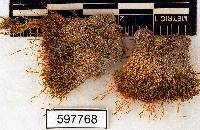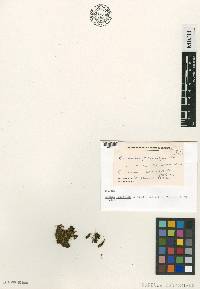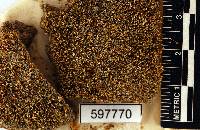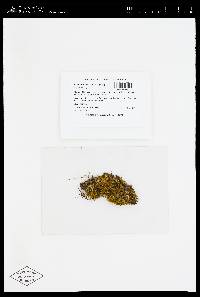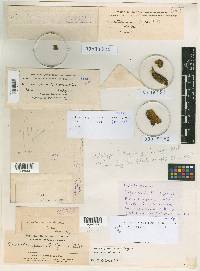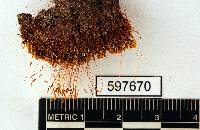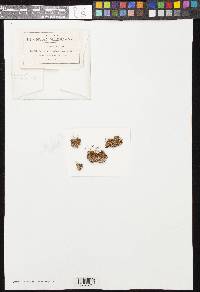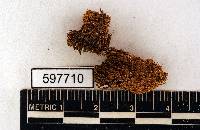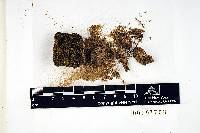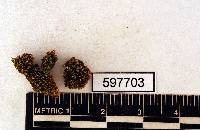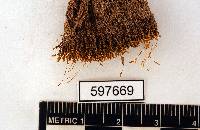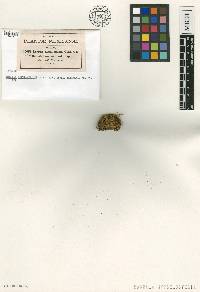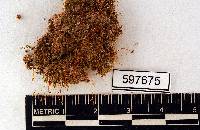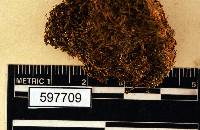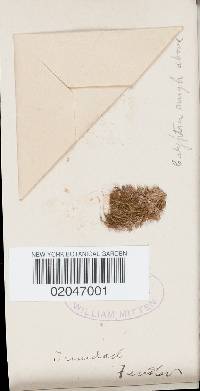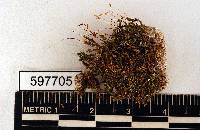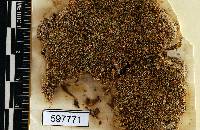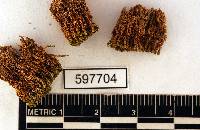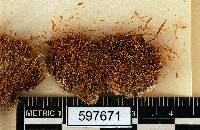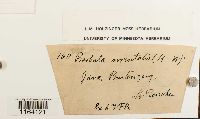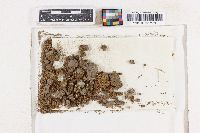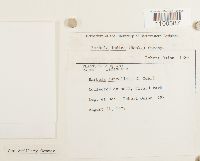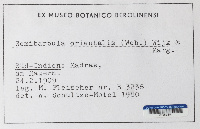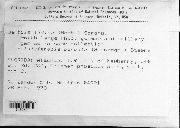
Consortium of Bryophyte Herbaria
- building a Consortium of Bryophytes and Lichens as keystones of cryptobiotic communities -
|
|
|
|
Family: Pottiaceae
barbula moss, more...barbula moss
[Anoectangium balfourei Mitt., moreAnoectangium mariei Besch., Anoectangium stuhlmannii Broth., Barbula afrounguiculata Müll. Hal., Barbula clavicostata (Renauld & Cardot) R.H. Zander, Barbula erosa Hampe, Barbula ferrugineinervis Broth., Barbula hypselostegia Cardot, Barbula indica (Hook.) Spreng., Barbula indica var. indica (Hook.) Spreng. in Steud., Barbula isoindica R.H. Zander, Barbula jooriana Müll. Hal., Barbula lambarenensis P. de la Varde, Barbula lonchostega Müll. Hal., Barbula microglottis Müll. Hal., Barbula muenchii Cardot, Barbula natalensis Müll. Hal., Barbula ochrocarpa Toyama, Barbula pringlei Cardot, Barbula purpuripes Müll. Hal., Barbula ravenelii Austin, Barbula rufipes Schimp., Barbula setschwanica Broth., Barbula stuhlmannii (Broth.) Broth., Barbula sublaevifolia Toyama, Barbula tonkinensis (Besch.) Broth., Barbula wrightii Sauerb., Barbula zollingeri (M. Fleisch.) Broth., Desmatodon bushii Cardot & Thér., Dicranella apiculata (Dozy & Molk.) Broth., Dicranum orientale (F. Weber) D. Mohr, Didymodon opacus Thér., Didymodon orientalis (F. Weber) R.S. Williams, Didymodon warnstorfii (Limpr.) Paris, Fissidens girodii (Renauld & Cardot) P. Syd., Hydrogonium clavicostatum (Renauld & Cardot) Hilp., Hydrogonium setschwanicum (Broth.) P.C. Chen, Hymenostomum malayense M. Fleisch., Hymenostomum opacum Wager & Dixon, Hyophila asanoi Sakurai, Hyophila biloinsularis Sakurai, Hyophila clavicostata Renauld & Cardot, Hyophila girodii Renauld & Cardot, Hyophila muelleri (Duby) A. Jaeger, Hyophila nakayamae Sakurai, Hyophila papillinervis (Lorentz) A. Jaeger, Hyophila roscheri (Lorentz) A. Jaeger, Hyophila uliginosa E. Britton, Hyophila warnstorfii (Limpr.) M. Fleisch., Microdus apiculatus (Dozy & Molk.) Paris, Pottia muelleri Duby, Pottia papillinervis Lorentz, Pottia roscheri Lorentz, Seligeria apiculata Dozy & Molk., Semibarbula indica (Hook.) Herzog ex Hilp., Semibarbula lambarenensis (P. de la Varde) Bizot, Semibarbula orientalis (F. Weber) Wijk & Margad., Semibarbula rufipes Hilp., Semibarbula stuhlmannii (Broth.) Hilp., Streblotrichum hypselostegium (Cardot) Hilp., Streblotrichum pringlei (Cardot) Hilp., Tortula indica Hook., Tortula obscura Mitt., Trichostomum orientale F. Weber, Trichostomum tonkinense Besch., Trichostomum warnstorfii Limpr., Trichostomum zollingeri M. Fleisch., Weissia malayensis (M. Fleisch.) Manuel, Weissia roscheri (Lorentz) Mitt.] |
Stems: to 1.2 cm. Leaves: firm when wet, long-ovate to ligulate, 0.5–1.8(–2) mm, base often elliptic, widened not strongly sheathing, margins plane or weakly recurved to mid leaf, apex broadly acute to rounded, apiculate or occasionally muticous; costa percurrent or ending 1–4 cells before the apex, abaxial costal surface doubly prorate (rough by projections at each end of superficial cells), often also with simple or 2-fid papillae, hydroids absent; distal laminal cells firm-walled, quadrate, 7–10 µm wide, 1:1, papillose. : Specialized asexual reproduction by gemmae borne on stalks in leaf axils. Perichaetial: leaves obtuse to broadly acute, strongly sheathing and convolute. Seta: 1–1.8 cm. Theca 0.8–1.2 mm. Spores: 10–12 µm. North America, Mexico, West Indies, Central America, South America, Asia, Africa, Australia. Varieties 2 (2 in the flora). Sporophytes of Barbula indica are rare in the flora area (collection date of the single fruiting collection seen not given). The distal laminal margins are usually plane and the abaxial surface of the costa is prorate, i.e., papillose by projecting ends of cell walls, often forming doubled projections, but sometimes additionally papillose by simple or 2-fid papillae. Leaves: narrowly oval to elliptic, margins plane or weakly recurved at mid leaf. : Specialized asexual reproduction by small, green, obovoid gemmae occurring in masses in distal leaf axils, of several cells, 70–90 µm. Soil, clay, limestone, cement, walls. low to moderate elevations (50-1000 m). N.W.T., Ala., Alaska, Ariz., Fla., Ga., Ill., Iowa, Kans., Ky., La., Minn., Miss., Mo., N.Mex., N.C., Ohio, Okla., S.C., Tenn., Tex., Utah, Va., Mexico, West Indies, Central America, South America, Europe (Hungary), Asia, Africa, Pacific Islands (Hawaii), Australia. Capsules of var. indica are rare in the flora area but mature in summer in Mexico. The gemmae are usually small and obovoid, but in some specimens are somewhat enlarged and branching. The typical variety is commonly fruiting; the seta is reddish, unlike that of Barbula convoluta, which is yellow. This species is often misidentified as B. unguiculata in the southeastern states, but viewed from the side, the abaxial costal papillae form rows across the costa, lined up as they are at both ends of epidermal cells. A hygrophylic variant may be confused with B. bolleana when incrusted with lime but its leaf cells are much smaller. The Alaskan station is clearly of this variety, though the prorulae are poorly developed, being replaced with dense simple to 2-fid papillae; the Northwest Territories specimen is more clearly of the standard morphotype. |
Powered by Symbiota.






